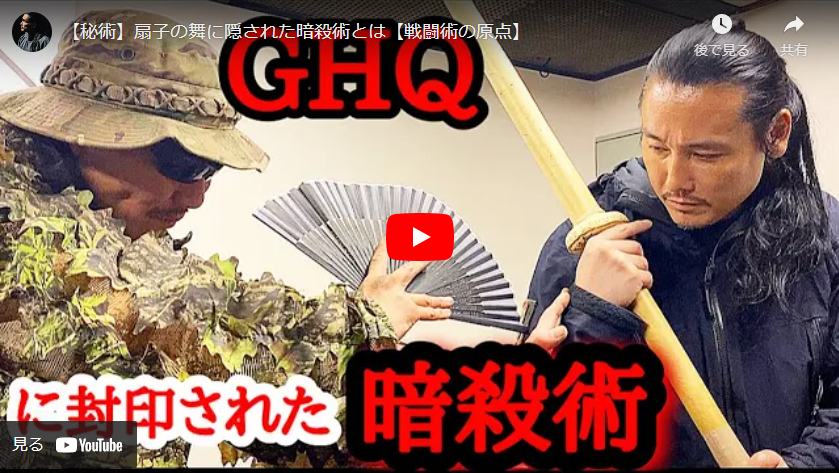↑↑↑↑↑~坂口拓の動画をタップして見る~↑↑↑↑↑
↑↑↑~Tap to watch Taku Sakaguchi’s video~↑↑↑
扇子の舞は、日本などで伝統的に行われてきた舞踊や演劇の一部として、扇子を使った美しい振り付けや演技を行うものです。扇子の舞は、舞台や儀式、祭りなど様々な場面で見ることができます。以下に代表的な扇子の舞の一例を紹介します。
-
団扇の舞: 日本の伝統舞踊や歌舞伎などでよく見られる団扇(うちわ)を使った舞です。扇子を手に持ち、独特の振り付けやポーズをとりながら踊る姿が特徴です。
-
千秋楽の扇: 能や狂言などの伝統芸能で、舞台の最後に出演者が舞台を飾る意味で扇子を振る舞いを行うことがあります。これは観客への感謝や芸者の舞を象徴するものとされています。
-
扇子の舞いに込められる意味: 扇子の舞には、風を表現するものや、歌や詩の内容に合わせて舞うもの、さまざまな感情や物語を表現するために使われるものなど、さまざまな意味が込められています。
扇子の舞は、その美しい動きや振り付け、風情が観客に楽しみや感動を与えることがあり、日本の伝統文化の一環として大切にされています。また、他の国や文化でも、扇子を使った舞踊やパフォーマンスが行われている場合もあります。
[Secret Technique] What is the assassination technique hidden in the fan dance? [Origin of Combat Technique]
Fan dance is a part of traditional dances and plays in Japan and other countries where beautiful choreography and performances are performed using folding fans. Fan dances can be seen in a variety of settings, including stage performances, ceremonies, and festivals. Below is an example of a representative fan dance. Uchiwa Dance: A dance that uses an uchiwa fan, often seen in traditional Japanese dance and Kabuki. It is characterized by holding a folding fan and dancing with unique choreography and poses. Fans of Senshugaku: In traditional performing arts such as Noh and Kyogen, performers sometimes wield folding fans to decorate the stage at the end of the performance. It is said to symbolize gratitude to the audience and the geisha’s dance.
The meaning behind fan dances: Fan dances have many meanings, such as those that represent the wind, dances to the content of songs and poems, and are used to express various emotions and stories. is included. The beautiful movement, choreography, and atmosphere of the fan dance give the audience a sense of fun and excitement, and it is valued as a part of traditional Japanese culture. Other countries and cultures may also have dances and performances using folding fans.









この記事へのコメントはありません。